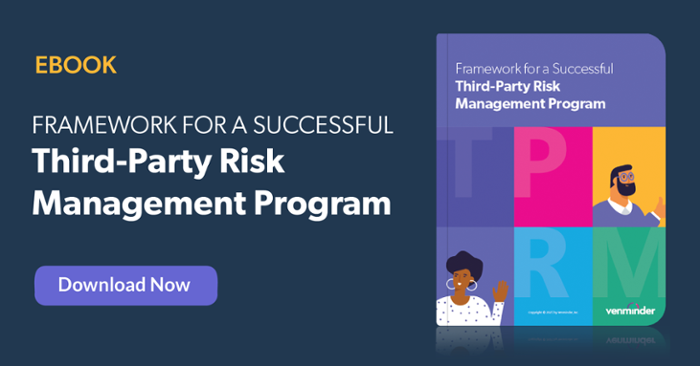There’s no right or wrong way to operate your program as long as you’re satisfying regulatory requirements, examiner expectations, not letting your policy, program and due diligence grow stale and basically taking all the right steps to maintain a very complete vendor management program.
However, as a best practice, centralized programs are recommended for organizations that are smaller to mid-sized and a hybrid of a centralized and decentralized framework is recommended for a larger organization. Centralized frameworks create consistency, discipline and promote better communication. We understand that this can be difficult to sustain if you’re a rather large organization, and that’s why a hybrid method becomes the best option.
Before even determining the best vendor management framework for your organization, you must identify which framework you’re currently using. You may think you have an idea but asking yourself these questions will help you know more confidently.
How to Determine If a Vendor Management Framework Is Decentralized
Is your vendor management program decentralized? Ask yourself the following:
- Do various lines of business work with the vendor daily?
- Do the lines of business monitor the vendor’s performance?
- Is it the lines of business’ responsibility to request and review vendor due diligence?
- Do the lines of business have a large say in the decision-making opportunities, such as selecting the vendor to work with?
- Do you feel that, as a third-party risk professional, you’re sometimes the last to know about a new vendor onboarding?
- Is their work product inconsistent?
If you answered “yes” to most of the above questions, then you’re likely operating with a decentralized vendor management framework.
How to Determine If a Vendor Management Framework Is Centralized
Is your vendor management program centralized? Ask yourself the following:
- Does one person or small group oversee the entire vendor management process?
- Do you feel there is a strong feedback loop to you on things like vendor performance and vendor complaints from your first line of defense (the business unit)?
- Does one person or small group oversee the seven pillars of vendor management (vendor selection, risk assessment, due diligence, contractual standards, ongoing monitoring, reporting and exit strategy)?
- Does one person or small group oversee the gathering of due diligence but involve subject matter experts (SMEs) to help with analyzing due diligence?
- Do you feel the playing field is level as there is an unbiased opinion on who the best vendors are for the organization (the business units aren’t as involved in decision making)?
If you answered “yes” to most of the above questions, then you’re likely operating with a centralized vendor management framework.
How to Determine If a Vendor Management Framework Is Hybrid
Is your vendor management program hybrid? Ask yourself the following:
- Do you have a vendor management office?
- Does the vendor management office set the vendor management guidelines and check the results while working closely with the lines of business?
- Do you feel there’s an open line of communication and efficiency between the first line of defense and the vendor management office?
- Do you feel the vendor management office ensures consistency within vendor management processes and expectations?
- Does senior management and the board back the vendor management office, set the overall tone and reinforce that everyone at the organization has a role in vendor management?
- Is the team able to keep up with the workload, particularly in a larger organization?
If you answered “yes” to most of the above questions, then you’re likely operating with a hybrid vendor management framework.
Now that you’ve determined your vendor management framework, the next step is to ask yourself if it’s working well for you. If it’s not, then it’s time to make a change. A framework that works well for an organization leads to more efficiency, streamlined processes and happy examiners, regulators, staff, and customers.
Get a more in-depth look at the proper third-party risk management program framework. Download this comprehensive eBook.



















